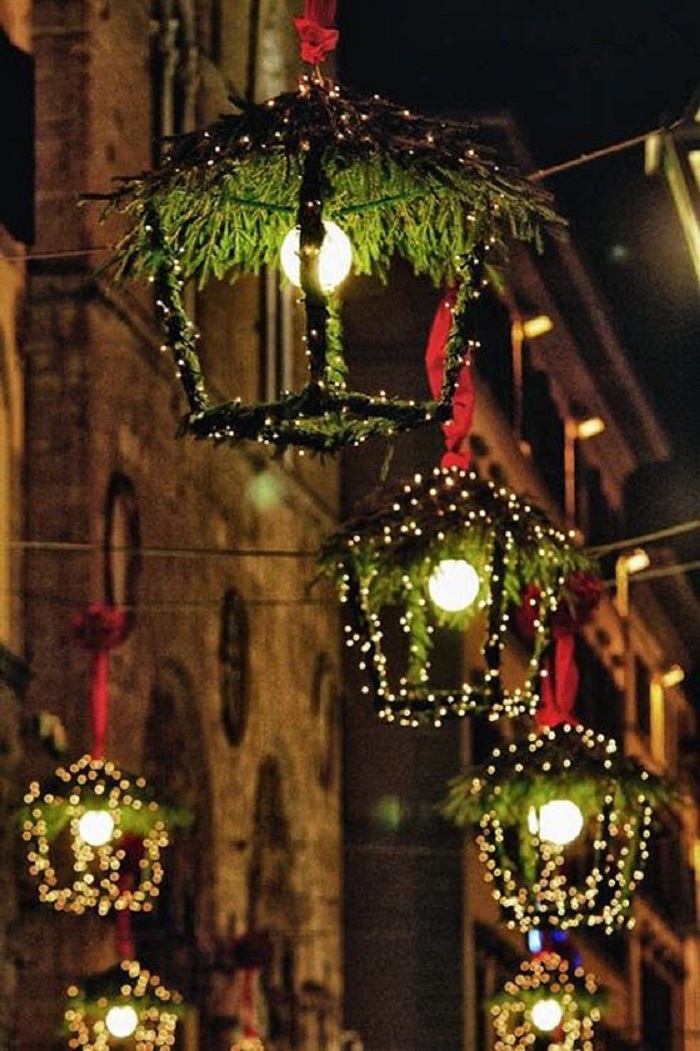Christmas time begins on the 1st Sunday of Advent in Italy, which comes 4 weekends before Christmas. This period is called "Novena." Children during this time go out singing Christmas carols & verses for sweets & coins. The Novena is a religious ritual linked to the rosary. While there are many times of the year where this devotional activity takes place, one of the most observed is Christmas. In the 9 days leading up to Christmas day, the rosary is said as a preparation to welcoming Christ. This religious tradition was extended with children going from house to house just as the time of prayer was over to sing traditional Christmas songs. The children would in turn receive small gifts of sweets or cakes.
Families set up manger scenes on the 1st day of "Novena." Every morning they gather around the nativity scene, pray & light candles. Children write letters to their parents wishing then a merry Christmas & promise good behavior. They also prepare a wish list of the gifts they want from their parents. These letters of appreciation are read out loud at dinnertime by the parents.
While Christmas decorations in Italy are beginning to include Christmas trees, the main emphasis is still on Nativity scenes. Many families place huge, life-size images of Mary & Joseph on their property. Nativity scenes are inevitable in almost every household in all churches. They are also found in many public areas as well.
In the last days of Advent, before the shrines of Mary in Rome & surrounding areas, bagpipers & flute players, Zampognari & Pifferaiin, in traditional colorful costumes of sheepskin vests, knee-high breeches, white stockings & long dark cloaks, travel from their homes in the Abruzzi mountains to entertain crowds of people at religious shrines.
Tradition holds that the shepherds played these pipes, when they came to the manger at Bethlehem to pay homage to the infant Jesus.
During Advent in Italy the ceppo appears. The ceppo is a wooden frame several feet high designed in a pyramid shape. This frame supports several tiers of shelves, often with a manger scene on the bottom followed by small gifts of fruit, candy, & presents on the shelves above. The "Tree of Light," as it is also known, is entirely decorated with colored paper, gilt pinecones, & miniature colored pennants. Small candles are fastened to the tapering sides & a star or small doll is hung at the apex.
An old tradition in Italy is the Urn of Fate which calls for each member of the family to take turns drawing a wrapped gift out of a large ornamental bowl until all the presents are distributed.
Families set up manger scenes on the 1st day of "Novena." Every morning they gather around the nativity scene, pray & light candles. Children write letters to their parents wishing then a merry Christmas & promise good behavior. They also prepare a wish list of the gifts they want from their parents. These letters of appreciation are read out loud at dinnertime by the parents.
While Christmas decorations in Italy are beginning to include Christmas trees, the main emphasis is still on Nativity scenes. Many families place huge, life-size images of Mary & Joseph on their property. Nativity scenes are inevitable in almost every household in all churches. They are also found in many public areas as well.
In the last days of Advent, before the shrines of Mary in Rome & surrounding areas, bagpipers & flute players, Zampognari & Pifferaiin, in traditional colorful costumes of sheepskin vests, knee-high breeches, white stockings & long dark cloaks, travel from their homes in the Abruzzi mountains to entertain crowds of people at religious shrines.
Tradition holds that the shepherds played these pipes, when they came to the manger at Bethlehem to pay homage to the infant Jesus.
During Advent in Italy the ceppo appears. The ceppo is a wooden frame several feet high designed in a pyramid shape. This frame supports several tiers of shelves, often with a manger scene on the bottom followed by small gifts of fruit, candy, & presents on the shelves above. The "Tree of Light," as it is also known, is entirely decorated with colored paper, gilt pinecones, & miniature colored pennants. Small candles are fastened to the tapering sides & a star or small doll is hung at the apex.
An old tradition in Italy is the Urn of Fate which calls for each member of the family to take turns drawing a wrapped gift out of a large ornamental bowl until all the presents are distributed.







